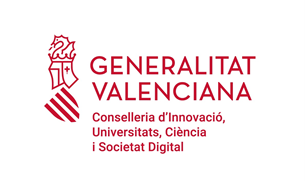The cornea is one of the most innervated tissues in the body. This innervation, whose function is sensory, in turn has a notable influence on the trophic state of the rest of the cell types that make up the cornea.
Indeed, diseases or accidents that occur with denervation compromise the integrity of the tissue and lead to neuroparalytic keratitis, a clinical condition that includes ulcers, eye pain and visual problems due to loss of transparency of the cornea. On the other hand, corneal cells also have a central effect on the survival of nerve endings.
Myelinated axons that enter the corneal stroma lose their myelin sheaths and continue as nonmyelinated axons to preserve transparency of the central cornea. Although no myelinated, these stromal axons are ensheathed by Schwann cells. In other tissues, Schwann cells are known to have a trophic effect on
peripheral nerve axons by secreting growth factors such as GDNF and Artemin. In this proposal we will explore the role of corneal Schwann cells in the reinnervation of the cornea after injury. To this aim we will take advantage of a number of genetically modified mice that we have generated in our previous CORNER Prometeo project (PROMETEO/2018/114), which allow us to label with different fluorescent proteins Schwann cells and nerve endings. They also allow us to kill Schwann cells (by the expression of diphtheria toxin) upon the local administration of 4- OH tamoxifen.
Interestingly, as a result of our project CORNER, we could identify a novel type of Schwann cell within the stroma of the cornea. These cells are not aligned with axons and have no obvious contact with them. In this project, we will also determine, by using NGS technologies, the gene expression pattern that characterize the newly identified non-axon associated Schwann cells, and explore the role of these cells in corneal sensitivity and pain transduction.
Finally, we will determine in humans, the role of Schwann cells in corneal innervation. To this aim, we will characterize by in vivo confocal microscopy, the innervation status of the corneas in CMT1 patients with mutations that alter Schwann cell biology. The impact of innervation in corneal sensitivity and function will be also determined in these patients. The human studies will also allow us to identify early innervation alterations that help to predict the development of the disease in non-symptomatic mutant carriers.
We are confident that the results of this proposal will help us to define precisely the role of neuroglial interactions on corneal function and reinnervation capacity after injury. It will also help to understand the impact of CMT1 mutations affecting Schwann cell biology on peripheral innervation. Finally, it can also allow us to identify early innervation defects that help in the diagnosis and preventive treatment of nonsymptomatic CMT1 mutant carriers.


